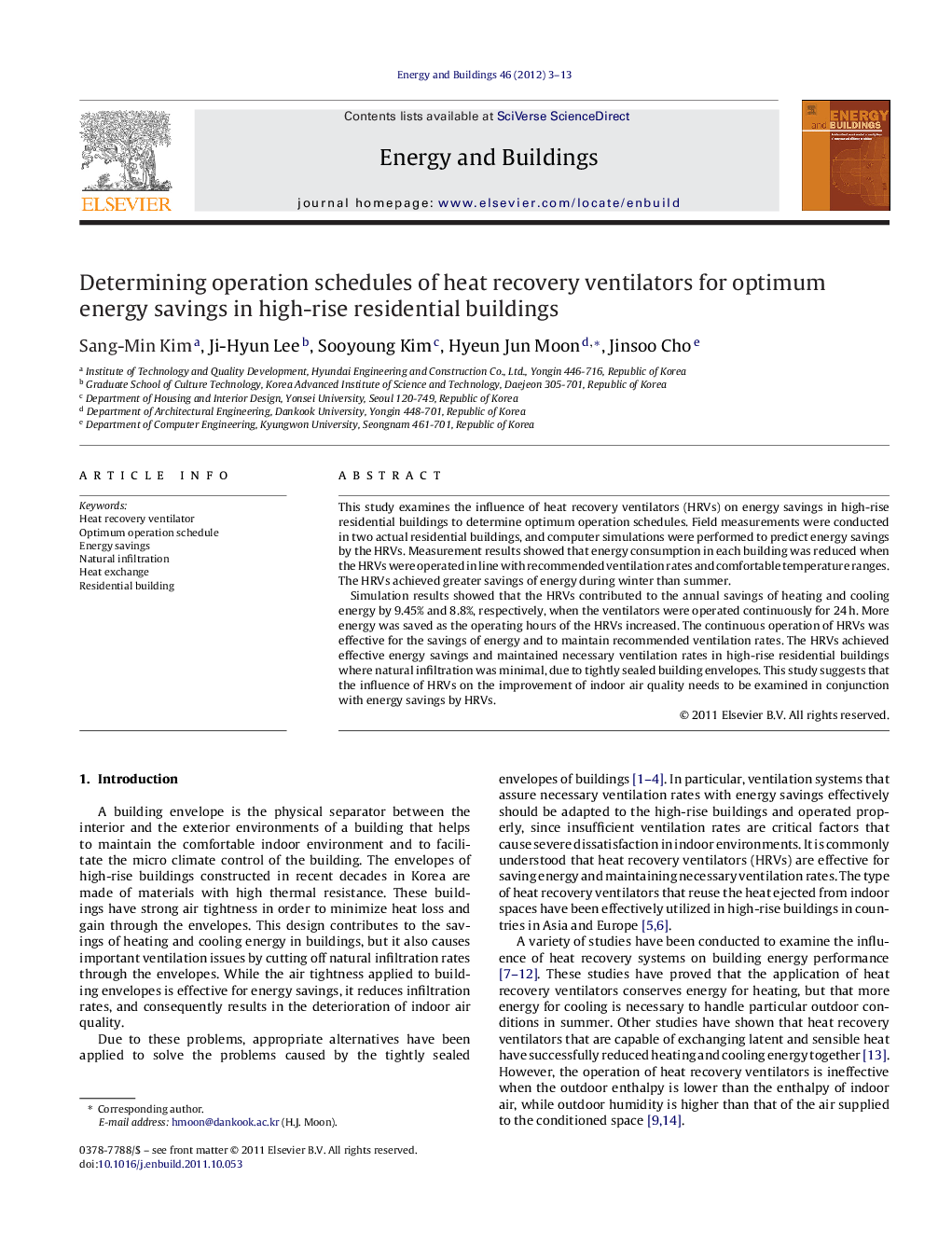| Article ID | Journal | Published Year | Pages | File Type |
|---|---|---|---|---|
| 6734867 | Energy and Buildings | 2012 | 11 Pages |
Abstract
Simulation results showed that the HRVs contributed to the annual savings of heating and cooling energy by 9.45% and 8.8%, respectively, when the ventilators were operated continuously for 24Â h. More energy was saved as the operating hours of the HRVs increased. The continuous operation of HRVs was effective for the savings of energy and to maintain recommended ventilation rates. The HRVs achieved effective energy savings and maintained necessary ventilation rates in high-rise residential buildings where natural infiltration was minimal, due to tightly sealed building envelopes. This study suggests that the influence of HRVs on the improvement of indoor air quality needs to be examined in conjunction with energy savings by HRVs.
Related Topics
Physical Sciences and Engineering
Energy
Renewable Energy, Sustainability and the Environment
Authors
Sang-Min Kim, Ji-Hyun Lee, Sooyoung Kim, Hyeun Jun Moon, Jinsoo Cho,
